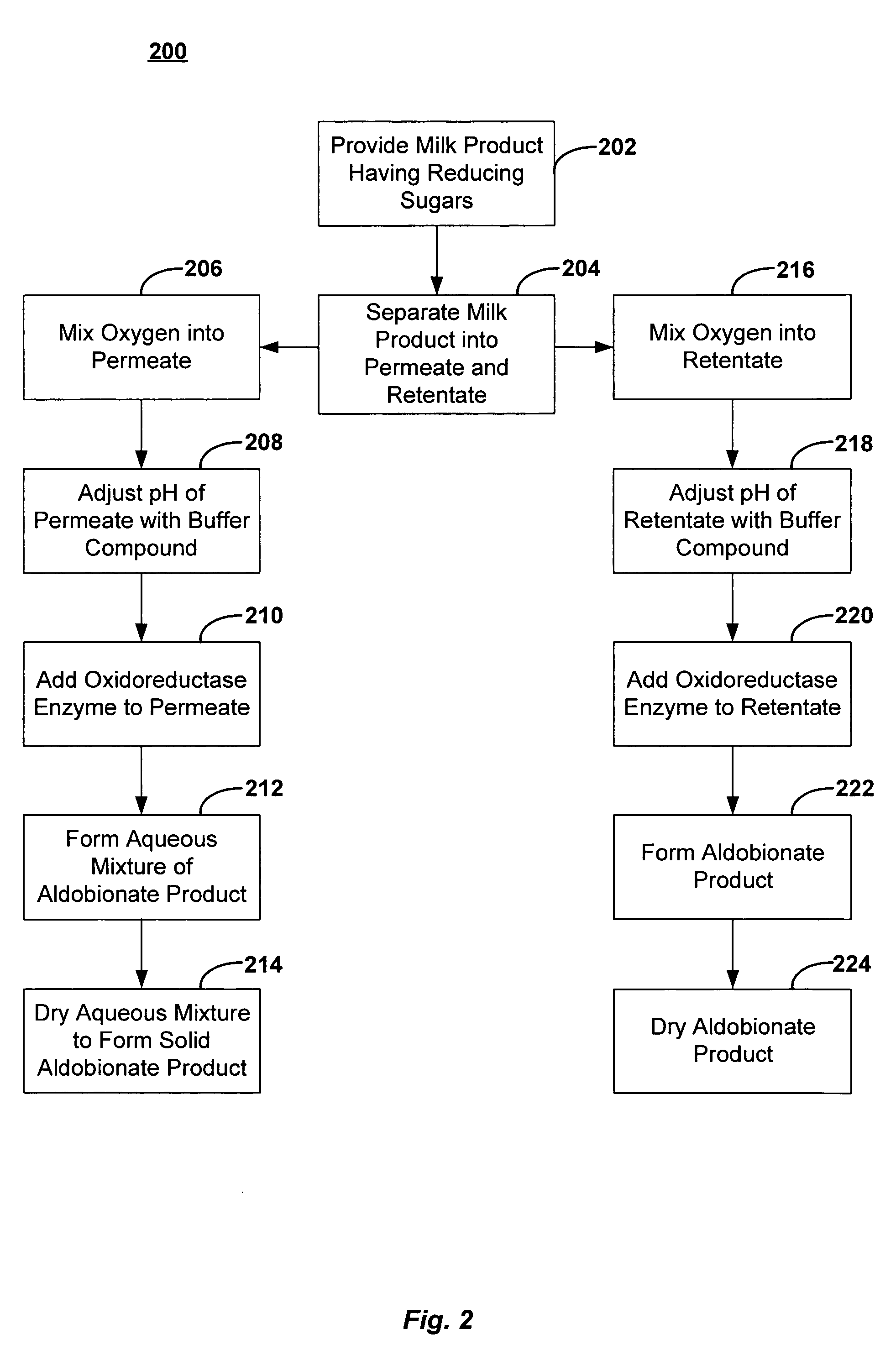Food ingredients and food products treated with an oxidoreductase and methods for preparing such food ingredients and food products
a technology of oxidoreductase and food ingredients, which is applied in the field of food ingredients and food products treated with oxidoreductase and methods for preparing such food ingredients and food products, can solve the problems of reducing sugar in food ingredients, affecting the taste of food, so as to reduce the absorption of fat or oil
- Summary
- Abstract
- Description
- Claims
- Application Information
AI Technical Summary
Benefits of technology
Problems solved by technology
Method used
Image
Examples
example 1
[0144] Calcium lactobionate was generated by combining delactose permeate (DLP), containing approximately 19% lactose, with water to create a 5% lactose solution. Lactose oxidase (Novozymes A / S, Denmark) was added at a rate of 425 units enzyme / kg lactose while catalase (Catazyme 25 L, Novozymes A / S, Denmark) was added at a rate of 6 g / kg lactose. The solution was held at 111° F. (43.9° C.) with a dissolved oxygen content of at least 3.2 mg oxygen / L at a pH between 6.4-6.6 using 5 molar calcium hydroxide. The reaction resulted in a complete conversion of lactose to calcium lactobionate as determined by Capillary Electrophoresis. This solution of calcium lactobionate was then spray dried and added to cheese.
[0145] Cheese was manufactured conventionally using starter cultures, modified food starch, and 2% calcium lactobionate (53% moisture, 47 FDB, 5.35 pH, 1.80% salt). The cheese was then shredded and frozen (QLC™).
[0146] Two-pound samples bags of frozen cheese were stored in the co...
example 2
[0150] Calcium lactobionate powder, produced by enzymatic conversion of lactose from Leprino Foods, was incorporated into cheese. The cheese was manufactured conventionally using starter cultures, modified food starch, and 2% calcium lactobionate (53% moisture, 47 FDB, 5.35 pH, 1.80% salt). The cheese was then shredded and frozen (QLC™).
[0151] Two-pound samples bags of frozen cheese were stored in the cooler at 40° F. (4.4° C.) until melted on a deep-dish crust including 10.80-oz of cheese with 3-oz of pizza sauce. The pizza was cooked in Middleby Marshall oven at 420° F. for 11 min 30 sec.
[0152] The melted pizzas (with 2% calcium lactobionate mixed with cheese and control cheese with non-fat dry milk powder mixed with cheese) were evaluated for blister color, blister % and blister size. The results are shown in Table 2.
[0153] It is evident from Table 2 that addition of calcium lactobionate as compared to a combination of modified food starch and dry milk powders had a significan...
PUM
 Login to View More
Login to View More Abstract
Description
Claims
Application Information
 Login to View More
Login to View More - R&D
- Intellectual Property
- Life Sciences
- Materials
- Tech Scout
- Unparalleled Data Quality
- Higher Quality Content
- 60% Fewer Hallucinations
Browse by: Latest US Patents, China's latest patents, Technical Efficacy Thesaurus, Application Domain, Technology Topic, Popular Technical Reports.
© 2025 PatSnap. All rights reserved.Legal|Privacy policy|Modern Slavery Act Transparency Statement|Sitemap|About US| Contact US: help@patsnap.com



